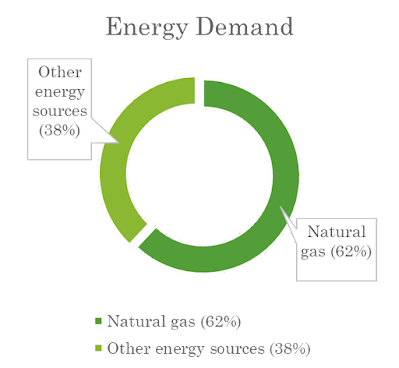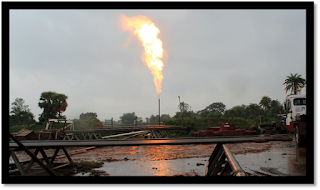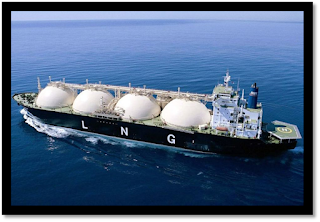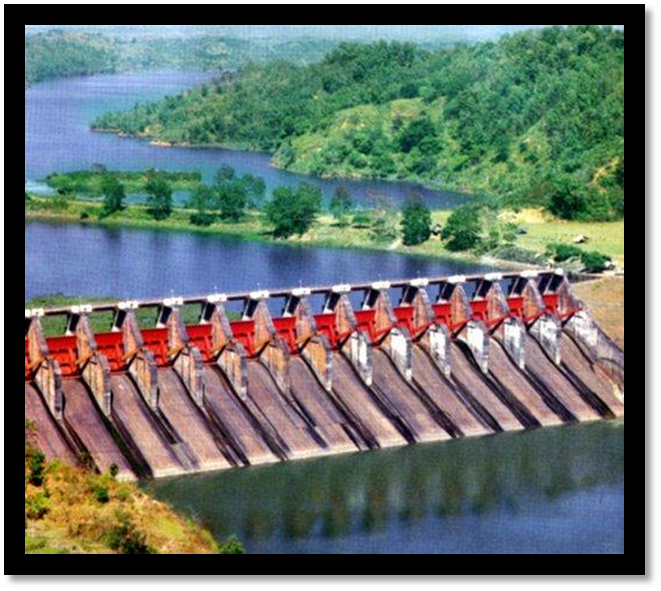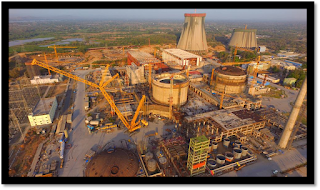Introduction
Energy resources are all forms of fuels used in the modern world, either for heating, generation of electrical energy, or for other forms of energy conversion processes. Bangladesh is a mid-income country. Her GDP growth rate is one of the world’s largest.
For any country, development is the precondition for
continued growth of GDP. And the main driving force of the country's
development is energy. Proper use of energy is essential to meet the country's
growing energy demands as well as to lift up from a mid-income country to a
developed country.
Known energy resources in Bangladesh includes:
-natural gas
-coal
-imported oil
-liquefied Petroleum Gas (LPG)
-imported Liquefied natural gas (LNG)
Agricultural residues and animal dung contribute a
substantial portion of biomass fuel in Bangladesh. Power is also
generated by Solar Home System & other renewable energies like hydro-power,
wind Energy, wave, tidal energy etc.
Natural Gas
Bangladesh Oil, Gas, and Mineral Corporation, short named
Petrobangla, under the Energy and Mineral Resources Division of the Ministry of
Power, Energy and Mineral Resources is entrusted with the responsibility of
exploration of oil and gas, and production, transmission and marketing of
natural gas in the country.
Bangladesh is the nineteenth-largest producer of natural gas
in Asia. Gas supplies meet 56% of domestic energy demand.
However, the country faces an acute energy crisis in meeting
the demands of its vast and growing population.
Since first discovery in 1955 as of today 26 gas fields, 24 in the onshore and 2 in the offshore have been discovered in the country. Of them 20 gas fields are in production, one offshore gas field have depilated after 14 years of production while other offshore field has not been viable for production due to small reserve.
Geologists believe
the country's maritime exclusive economic zone holds one of the largest oil and
gas reserves in the Asia-Pacific.
Petroleum (oil
energy)
Petroleum products like diesel, petrol, octane furnace oil
etc, account for about 20 % commercial energy supply in the country. Liquid
fuel used in Bangladesh is mostly imported.
Locally produced gas condensate shares only 6% of total
liquid fuel consumption. Bangladesh imports about 1.26 million metric tons of
crude oil along with 4.04 million metric tons of refined petroleum products per
annum. Major consumer of liquid fuel is transport followed by power,
agriculture, industry and commercial sectors
Coal
Coal is a readily combustible
sedimentary rock composed essentially of lithified plant materials, with small
amount of inorganic matter present in the form of mineral.
Considering the uncertainty of
sustainable supply of primary energy, it is necessary to diversify the primary
energy sources in the country. In that case, domestic coal can be a major
alternative energy source for the energy security of the country.
At present 2.55 % of electricity
has been produced from domestic coal.
5 coal fields so far discovered,
namely Barapukuria, Khalaspir, Phulbari, Jamalganj and Dighipara. If
initiatives are taken for exploration all over the country, there are enough possibilities
to discover more coal mines.
Liquefied Petroleum Gas (LPG)
Demand of Liquefied Petroleum Gas
(LPG) in Bangladesh is very high.
In the public sector 13,414 MT is
produced during 2019-20. Whereas 835,027 MT is imported through private entity.
Therefore, public and private sector combining do the marketing of 848,441 MT
of LPG in 2019-20, which is meeting a certain portion of LPG demand of the
country.
Considering the rising demand for
LPG, government has decided to enhance LPG bottling facilities for marketing
more imported LPG. For this purpose, two LPG bottling plants, each having
capacity of 100 thousand MT per annum, will be set up in the coastal area.
Liquefied Natural Gas (LNG)
Some of the gas fields located in
north - eastern part of Bangladesh contains high percentage of liquid
hydrocarbon. Extraction of this liquid, especially value added by-products, is
becoming a growing activity. Apart from the condensate fractionation plant
installed in different gas fields, Rashidpur Condensate Fractionation Plant
with a capacity of 3,700 bbl./day is producing petrol, diesel and kerosene by
fractioning the condensate received from Bibiyana Gas Field.
Renewable Energy Resources
Renewable energy resources could
assist in the energy security of Bangladesh and could help reduce the natural
gas demand. Regions of the country without supply or access to natural gas or
the electric grid use biomass for cooking and solar power and wind for drying
different grains and clothes.
Biomass is currently the
largest renewable energy resource in use due to its extensive noncommercial
use, mainly for cooking and heating. Biomass comprises 27 percent of the total
primary energy use in Bangladesh.
The country has a huge potential
for generating solar power. Moreover, the use of renewable energy has
become popular worldwide in view of the depleting reserves of non-renewable
fossil fuels.
Renewable energy is
environmentally friendly.
Traditional Biomass fuels
In Bangladesh, three major types
of biomass fuel resources are in use: wood fuels, agricultural residues and
animal dung. Wood fuels are obtained from different types of forests and tree
resources grown in rural areas. Agricultural residues and animal dung
contribute a substantial portion of biomass fuel in Bangladesh.
A part of the total agricultural
residues available during harvesting of crops and a part of total animal dung
produced by animal re-sources are used as fuel. Availability of these resources
as fuel depends on local situation and socio-economic condition of the owners.
Hydro-power Energy
Hydroelectricity is a renewable source of energy where water is used to transform water head into kinetic energy in which water flow helps the turbine propeller to rotate.
Being a riverine country,
Bangladesh has enormous advantage for hydro electricity generation. Micro
hydro-power can be produced from this vast amount of river currents and sources
of low head of water falls.
Solar Energy
Bangladesh is geographically
located in a favorable position for harnessing sunlight, available abundantly
for most of the year except for the three months June-August when it rains
excessively.
Solar Home System (SHS) provides
reliable power for lighting and operating low powered appliances such as radio,
television, small electric fans. The electricity provided by a SHS can also be
used to run Direct Current (DC) driven equipment such as DC shouldering irons,
drilling machines etc. and to charge the battery of mobile phones. Larger
systems can run computers, refrigerators, pumps etc.
Wind Energy
Bangladesh is exploring the
potential of wind power. In the coastal area of Bangladesh, windmills with a
capacity of 2.9 MW are in operation. Bangladesh has had to wait for a
breakthrough in wind power technology to be competitive against other
conventional commercial energy sources. A pilot project to install windmills
along the seashore with a capacity of 20 MW has been planned by the government.
Tidal Energy
The tides at Chittagong, south
east of Bangladesh are predominantly semidiurnal with a large variation in
range corresponding to the seasons, the maximum occurring during the south-west
monsoon. A strong diurnal influence on the tides results in the day time tides
being smaller than the night time. This could be future energy source of
Bangladesh.
Wave Energy
Until to now no attempt has been
made by Government of Bangladesh to assess the prospects for harnessing energy
from sea waves in the Bay of Bengal. Wave power could be a significant
alternative source of energy in Bangladesh with favorable wave conditions
especially during the period beginning from late March to early October. Waves
are generally prominent and show a distinct relation with the wind.
Nuclear Power
Nuclear power is characterized by
very large up-front investments, technical complexity, and significant
technical, market and regulatory risks, but have very low operating costs and can
deliver large amount of based load electricity while producing almost no CO2
emissions. Typical construction times are between five and eight years from
first concrete poured. Government of Bangladesh has signed a general contract
with Russia on December 25, 2015 for the construction and commissioning of the
country’s first nuclear power plant at Rooppur in Pabna.
|
Unit |
Capacity |
Construction start |
Commercial Operation |
|
Rooppur 1 |
1200 MW |
Oct 2017 |
2023 or 2024 |
|
Rooppur 2 |
1200 MW |
2018 |
2024 or 2025 |
Energy Crisis in Bangladesh
The present energy crisis in
Bangladesh is partly due to over-dependence on gas which fulfils more than 70
per cent of its energy needs.
The crisis will deepen unless a
greater share of indigenous coal is included in the energy mix.
In the absence of other immediate
energy options, the potential of the country to address its energy problem lies
in full-scale gas exploration and coal exploitation programmers, both of which
are yet to mature.
Bangladesh should also look for energy cooperation with its neighbors for energy trade and energy infrastructure development.

